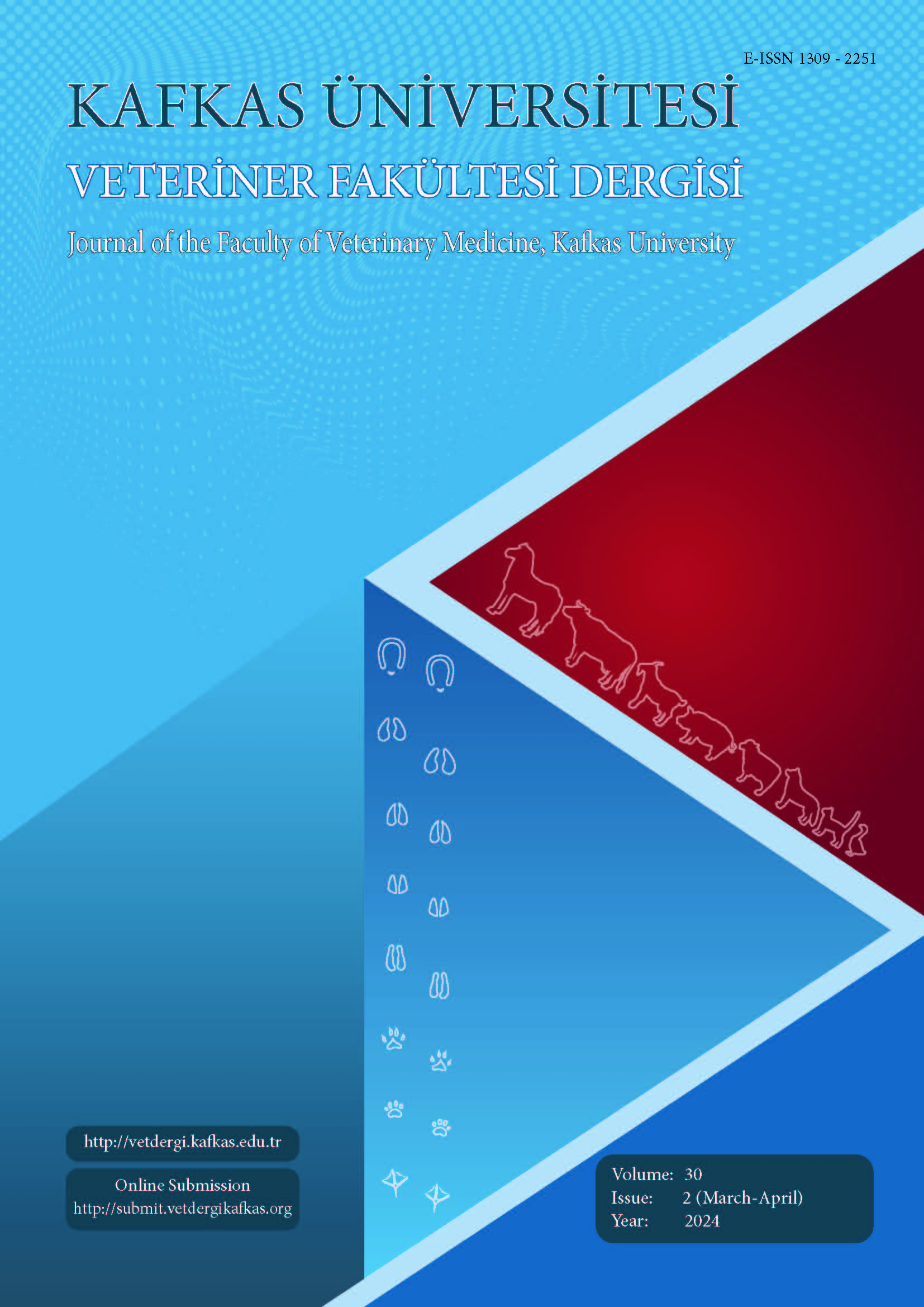
This journal is licensed under a Creative Commons Attribution-NonCommercial 4.0 International License
Kafkas Üniversitesi Veteriner Fakültesi Dergisi
2024 , Vol 30 , Issue 2
Antennal Transcriptome and Proteome Analysis of Olfactory Genes and Tissue Expression Profiling of Odorant Binding Proteins in Wohlfahrtia magnifica
1College of Veterinary Medicine, Inner Mongolia Agricultural University, Key Laboratory of Clinical Diagnosis and Treatment Technology in Animal Disease, Ministry of Agriculture and Rural Affairs, Hohhot 010018, P.R. CHINA2Animal Husbandry Institute of Alxa League, Agri - Husbandry Building, Yabrai East Road, East District of New City, Bayanhot Town, Alxa Left Banner, 750306, Alxa League, Inner Mongolia Autonomous Region, P.R. CHINA
3Animal Husbandry and Veterinary Technology Promotion Centre of Alxa League, Agri - Husbandry Building, Yabrai East Road, East District of New City, Bayanhot Town, Alxa Left Banner, 750306, Alxa League, Inner Mongolia Autonomous Region, P.R. CHINA
4West Wujimqin Banner Animal Husbandry Station, Agri - Husbandry Building, Administrative Street, Balgargol Town, West Wujimqin Banner, 026200, Xilingol League, Inner Mongolia Autonomous Region, P.R. CHINA
5Animal Disease Prevention and Control Centre of Urad Back Banner, Bayinbulag Town, 015543, Bayannur City, Inner Mongolia Autonomous Region, P. R. CHINA DOI : 10.9775/kvfd.2023.30981 Wohlfahrtia magnifica is a species of fly that parasitizes Bactrian camels. The adult flies lay their larvae near the vulva of the camels, and these larvae develop and cause damage to the vaginal tissues, resulting in vaginal myiasis. Olfactory organs play an important role in the identification and location of host, foraging, mating and oviposition behavior of W. magnifica. Olfactory genes were identified by antennal transcriptome analysis. Twenty-four odor-binding proteins (OBPs) and two chemosensory proteins (CSPs) were identified in the antenna transcriptome of W. magnifica, and then the phylogenetic analysis of the olfactory genes of W. magnifica and other species was carried out. RTqPCR was used for the first time to analyze the expression profile of OBPs in the antenna tissues of the W. magnifica. In the tissue expression analysis of OBP genes, it was found that many of them showed obvious gender bias in antennae, indicating their different roles in identifying pheromones. These results will help to lay a foundation for the future research on the sense of smell of W. magnifica and help to better reveal the change of odor reception of W. magnifica and provide new ideas for the research on biological prevention and control of vaginal myiasis. Keywords : Antenna, Olfactory genes, Transcriptome, W. magnifica










